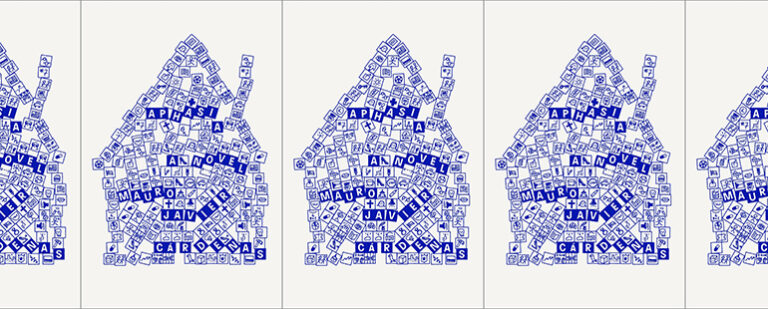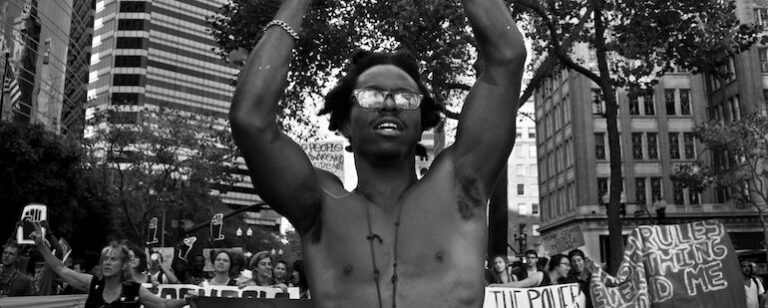Postludes: An Interview with Matthew Burnside
Matthew Burnside is a writer and educator. He lives in Middletown, Connecticut and graduated from the Iowa Writers’ Workshop with an MFA in fiction. His writing has appeared in Best American Experimental Writing, DIAGRAM, Ninth Letter, and Kill Author, among others. He also graduated from the University of North Texas with an MA in education and a BA in English/creative writing. He is currently working on a collection of science fiction stories and a series of young adult adventure novels. I interviewed him about his debut full-length collection Postludes, now available for pre-order from Kernpunkt Press.
Koh Xin Tian: How did you put POSTLUDES together and what was the process of organizing the manuscript like?
Matthew Burnside: It was tricky because the theme that would inevitably make it cohesive didn’t immediately emerge. It wasn’t a thing that popped out, so finding a publisher was difficult. It was always a collection of formal experiments, and that’s certainly one thing that each work has in common. But once the common thread of endings and how we deal with finality emerged it became a process of simply ordering the pieces in a way that offered the most interesting variations on that theme.
Later, I tacked on the new media works – which I certainly see as making sense for the project as a series of experiments, but perhaps not so much for the theme of endings. Still. I wanted to treat the reader to a feast of formal possibilities, which meant going beyond the analog tale.
K: In “Bestiary,” we are offered an alternative account of a classic fairytale: “Another version posits a reversal of roles: It is not Little Red Riding Hood but the Big Bad Wolf on his way to his grandmother’s house. When he arrives at her cave he finds a girl dressed in the fur of his grandmother, milkwhite teeth smeared rouge – the girl having been taught early on the wickedness of wolves by her father the hunter. Moral: A wolf is a wolf is still a wolf, but only because the woods made it that way.” Your book often plays with positionalities or concepts turned inside out this way: e.g. “was it better to find a glass of water in the desert or the mirage of a glass of water? Because a glass of water would only really prolong things, stretch the whole torturous journey out but a mirage would be more honest therefore more compassionate.” What is a phenomenon or idea that you have been wondering about recently, in an inside-out way?
B: Lately I’ve been thinking about “undoings,” which was the basis of a course I took at Iowa taught by Charles Baxter. Basically, it’s our human tendency to expend tremendous amounts of time and energy into trying to undo something we’ve done rather than to accept it and move forward. When you think about it, it’s at the heart of so many stories – from Macbeth all the way to the masterful anime series Paranoia Agent, which finds its protagonist avoiding reality and sinking deeper and deeper into escapism despite the calamities it causes all those around her. That, to me, is the most interesting thing about undoings: our failure to see how damaging it can be to those around us when we refuse to accept the consequences of our actions.
You can even apply this to our political climate right now. So many people are in denial (myself among them), and we’re pouring tremendous amounts of energy into trying to undo what has already been done (like betting on Trump’s election falling through in some miraculous way), rather than perhaps facing this new terrifying reality of ours and moving ahead to trying to fix the root of the problem – tackling the conditions that have enabled someone like him to rise to power.
An inside-out way of thinking about it, though, is that this is exactly what makes us human. Were we to accept everything as it is, we would be something other than human. Human beings see beyond things as they are to how they should be, and that’s what makes us beautiful messes. That, too, I think is what makes fiction so riveting and heartbreaking.
K: Many of the characters in the book confront realities or unhappy events in unexpected ways – some by constructing metaphors by which to understand them, others by dismissing them in a way that reveals their fear of approaching or dealing with them that reminds me a little of characters like Holden Caulfield. And all seem to view the world sidewise. Where do these characters come from, and which authors have been inspiring you lately?
B: There is a lot of Holden Caulfield in there, especially in Passengers. Like Holden, the characters in that story are stricken with nihilism. They suffer from an inability to transfer their pain into something more constructive, in the way that Van Gogh transferred his inner torment into ecstatic art. I remember one review of the story long ago stating that it didn’t seem to go anywhere, and that’s exactly the point. The characters suffer from a kind of spiritual drought, and therefore can’t move forward. They live in a stultified state, like Holden does. All they can do is fixate on the pain, and so they fail to notice all the ways it gets passed on and spread to others through hate or indifference.
As far as where the characters came from, they’re most certainly me as a teenager, before art taught me empathy: to see beyond my own pain to the pain of others, and all the ways I might either contribute to it or do my part to help remedy it.
Lately, I’ve been re-reading Ready Player One and marveling at how fun it is. That’s my goal with the young adult novels: fun and accessibility. Which is a challenge. Accessibility isn’t exactly my strong suit.
K: If this book is postludes, where are the preludes?
B: The unifying theme of how we come to the end, and to what extent we get to choose our fate posits that the preludes remain safely tucked away for another book, for another day.
Read more about Postludes here at Kernpunkt Press.


